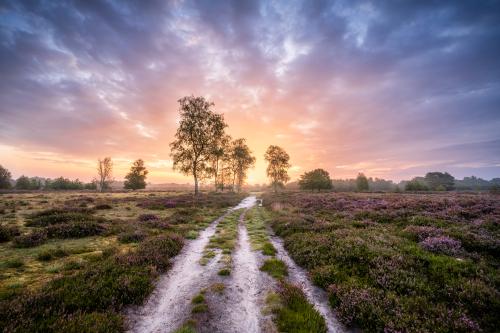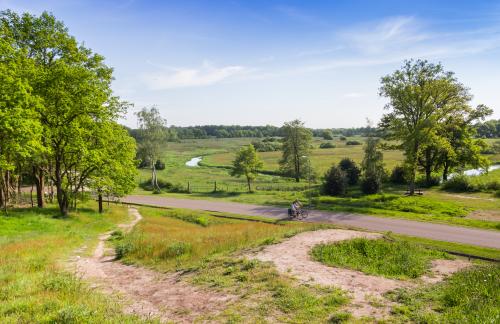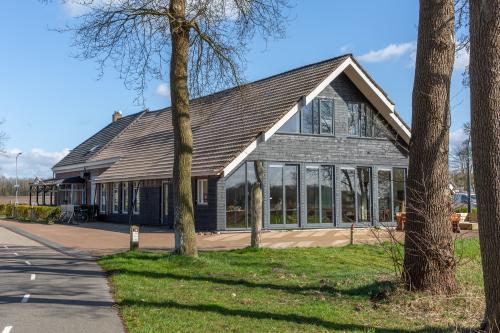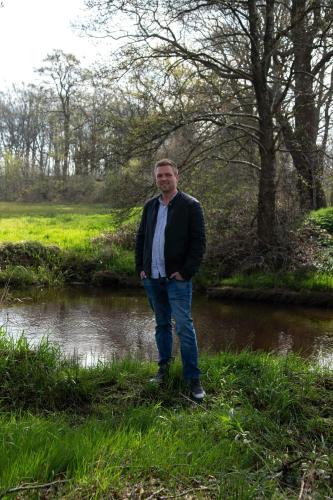Province(s)
Status
Surface
Landscape
Robust, rich in cultural history, and full of stories
In ancient times, the unparalleled forces of water, wind, and ice laid the foundation of this robust landscape. The slopes formed at that time and the meandering streams in the rural landscape characterize the current landscape. Humans and nature further shape this exceptionally well-preserved river basin together. Wander along quiet roads by the water and prehistoric monuments. Or trudge through the mud and be amazed time and again by the colors and sounds of nature, the birds, and especially the butterflies and dragonflies.
Time seems to stand still here
Wherever you are in Drentsche Aa National Park, the landscape exudes a timeless history. With the most prehistoric monuments in our country together, old esdorp villages, and other (cultural) historical discoveries, there is no escaping it. Walk along the ancient cart tracks to burial mounds, dolmens, and gallows hills. And detach from daily life and briefly return to "primeval".

Rare and Characteristic Esdorp Landscape
Nationaal Park Drentsche Aa is the best-preserved esdorp landscape in Western Europe. An esdorp landscape is above all an agricultural cultural landscape and contains several recurring elements: the village, the es, the stream valley, and the fields, forests, and heathlands. The esdorpen such as Anloo, Taarlo, and Grolloo have traditionally formed the basis of the landscape's development. They are often located on landscape transitions from wet to dry. This allowed the inhabitants easy access to water for livestock and at the same time, arable land for growing food. Several esdorpen have the status of village appearance, where the characteristic open village structure is well preserved. They are well worth a visit!

Walk through an open-air museum
Between Anloo and Schipborg lies the nature reserve Strubben Kniphorstbos. It is the largest archaeological monument in the Netherlands. For thousands of years, the inhabitants of this area have left many visible traces, such as dolmens and burial mounds. But you can also find less visible or even invisible traces during this walking route along the most remarkable places in this "open-air museum." The walk is 9 km but can also be shortened to 5 km.
Aa is a brook
In fact, the Drentsche Aa brook does not flow through Drenthe, but through Groningen. The entire area, with many different brooks, is called the Drentsche Aa area. The brooks themselves all carry their own names, named after the nearest village or field. Yet you do not hear the word brook or brooks in Drenthe. There, a brook is not called a brook, but loop, diep, stroom, or naturally: Aa.

Water is life
The exceptionally clean Drentsche Aa water has been serving as drinking water for the city of Groningen for more than 140 years. The streams form the lifelines of the landscape. By restoring and carefully managing nature, rare plants and animal species can maintain themselves or return. With some luck, you might spot the otter, beaver, or crane here. Or the equally remarkable river lamprey or dark blue rampion, a long-living early summer bloomer.

A view you can't refuse
Drenthe is one of the most hilly provinces of our country. You can see this best from the various viewpoints, also known as belvederes. They are located a short distance from each other and have relatively significant elevation differences. The most famous one, which has also been captured in paintings, is the Kymmelsberg. The hill is located south of the village of Schipborg on the Borgweg in the direction of Anloo.
Highlights
Experience true silence or walk with the shepherds of Balloo
Do you want to visit the park?

Visitor Center: House of the Drentsche AA
Asserstraat 63, 9451 TA Rolde (from May 2025)

Want to know more about Drentsche Aa National Park?
Discover all the current information on the park's website. From the activity calendar and hiking trails to contact details and more.


